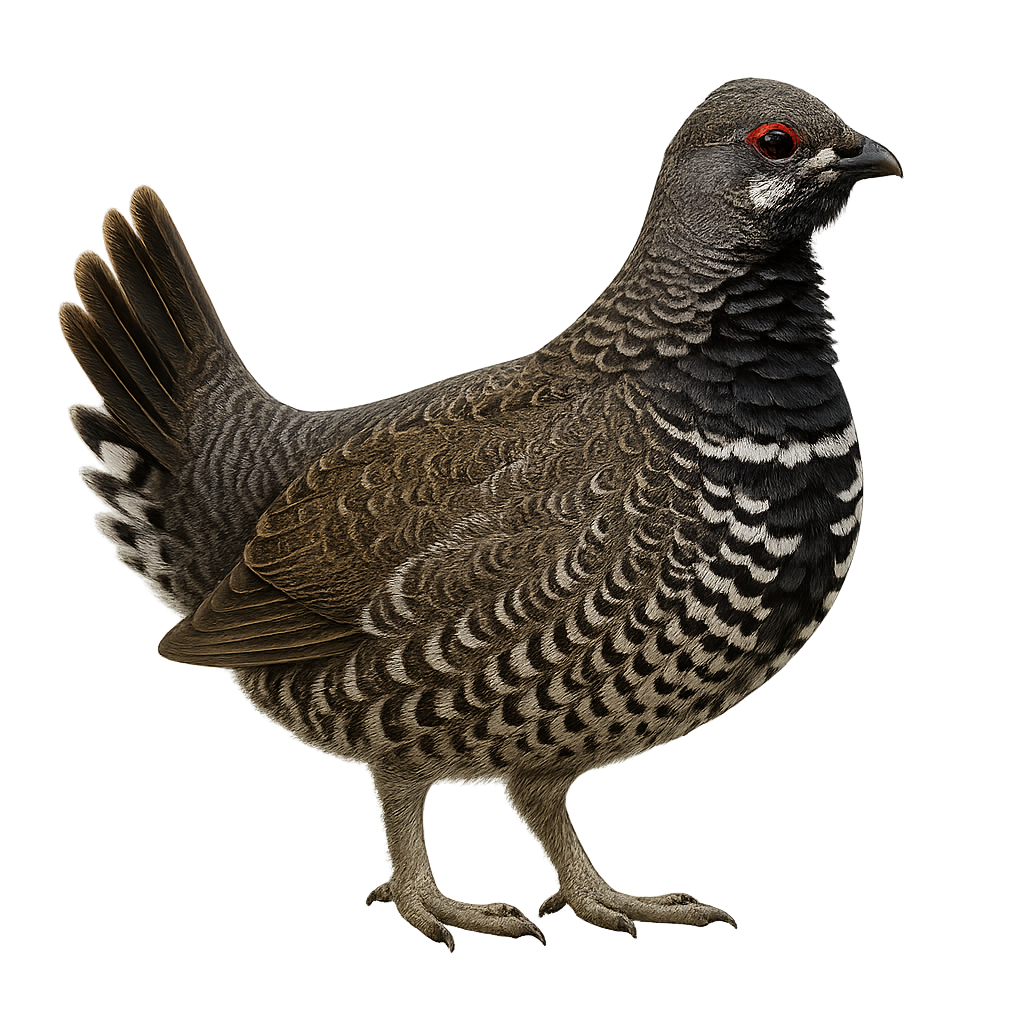Your wildlife photography guide.
Explore the spruce grouse in detail, study its behavior, prepare your shots.
Where to observe and photograph the spruce grouse in the wild
Learn where and when to spot the spruce grouse in the wild, how to identify the species based on distinctive features, and what natural environments it inhabits. The WildlifePhotographer app offers tailored photography tips that reflect the spruce grouse’s behavior, helping you capture better wildlife images. Explore the full species profile for key information including description, habitat, active periods, and approach techniques.
Spruce Grouse
Scientific name: Canachites canadensis

IUCN Status: Least Concern
Family: PHASIANIDAE
Group: Birds
Sensitivity to human approach: Shy
Minimum approach distance: 10 m
Courtship display: May to June
Incubation: 21-23 jours
Hatchings: May to July
Habitat:
Boreal forests, taiga, wetlands
Activity period :
Primarily active during the day, with peak activity in the morning and late afternoon.
Identification and description:
The Spruce Grouse, or Canachites canadensis, is a discreet forest bird primarily found in the boreal forests of North America. It is well adapted to its environment, with plumage that blends seamlessly into the underbrush. This medium-sized bird, measuring about 38 to 43 cm, is recognizable by its brown and gray plumage, speckled with white patterns. Males display a red patch above the eye, particularly visible during the breeding season. The Spruce Grouse feeds mainly on conifers but can also consume insects and berries. It is known for its discreet behavior and ability to remain still to avoid predators.
Recommended lens:
400mm – adjust based on distance, desired framing (portrait or habitat), and approach conditions.
Photography tips:
To photograph the Spruce Grouse, it is advisable to use a telephoto lens of at least 400mm to capture detailed images without disturbing the bird. Approach slowly and remain silent to avoid scaring it away. The best photo opportunities occur early in the morning or late in the afternoon when the lighting is soft. Look for areas where conifers are dense, as this is where the bird is most often found. Be patient and ready to wait, as this bird is known for its discreet behavior.
The WildlifePhotographer App is coming soon!
Be the first to explore the best nature spots, track rutting seasons, log your observations, and observe more wildlife.
Already 1 432 wildlife lovers subscribed worldwide

